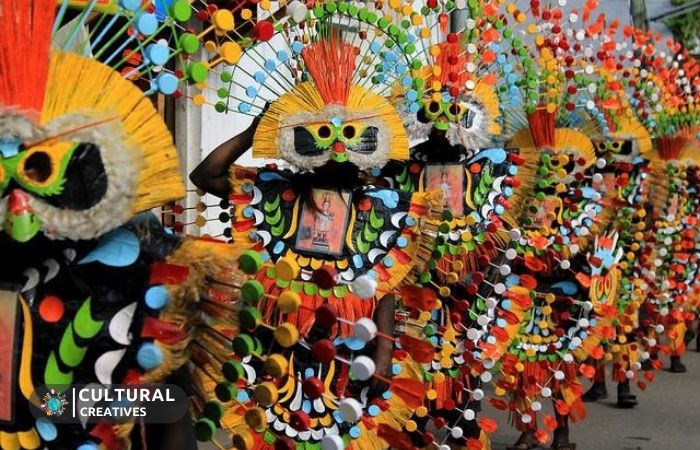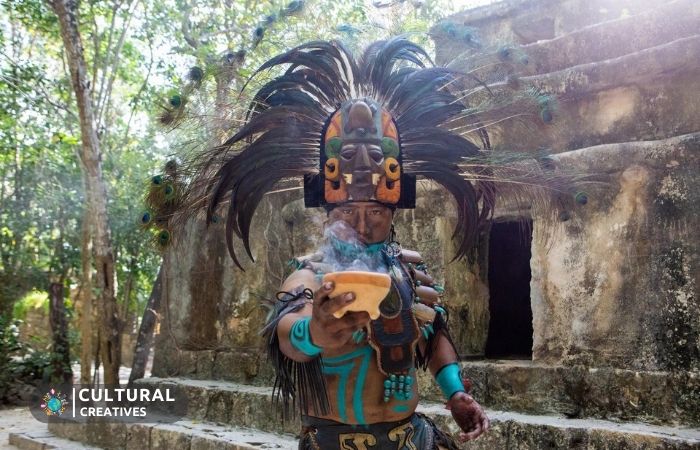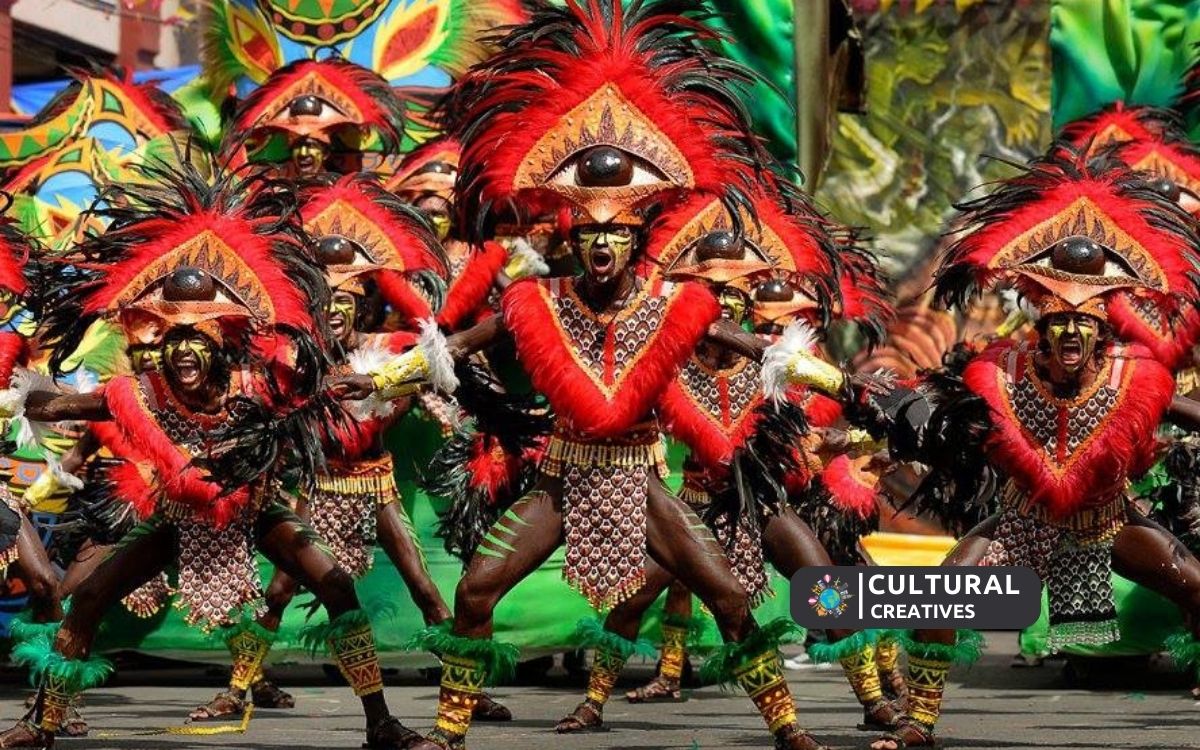The Ati-Atihan Festival is a Philippine fiesta celebrating the Santo Niño. Held annually in 3rd Sunday of January in Kalibo, Aklan, it’s famous for vibrant parades and indigenous dance.
Experience the explosion of culture and faith at the festival, where the rhythmic beats of drums fuse with the chants of merriment. Participants adorn themselves in elaborate costumes and paint their faces to resemble the indigenous Ati warriors. The streets of Kalibo come alive as crowds joyfully dance with the spirited locals, creating a spectacle of color and sound.
Devotees also carry images of the Santo Niño, showcasing their veneration in a blend of Christian and pagan traditions. The festival invites both locals and tourists to partake in a week-long celebration, culminating in an unforgettable day of street dancing. This event is not just a feast for the eyes but a testament to the Philippines’ rich cultural tapestry and deep-rooted spirituality.
History of Ati-atihan Festivals: The Philippines’ Wildest Fiesta

Marvel at the vibrant energy, rhythmic drumbeats, and the spirited dances that flood the streets of Kalibo, Aklan each January. This isn’t just any festival; it’s the Ati-Atihan, often dubbed as the Philippines’ wildest and most jubilant fiesta. Decked in elaborate costumes smeared with soot to depict indigenous Atis, locals and tourists alike surrender themselves to a week-long spell of non-stop revelry to honor the Santo Niño, the infant Jesus.
Tracing its roots back to the 13th century, Ati-Atihan started as a barter agreement between the Ati people and Malay settlers. In a colorful portrayal of this history, the festival has transformed from a pagan celebration to a religious event. Immersed in this cultural tapestry is a tale of acceptance, friendship, and devotion that has left an indelible mark on Philippine history. It is the meeting of Aeta natives and the influx of Malays that has given this jubilee its enduring vibrancy and distinctive spirit.
The Ati-Atihan is ultimately a grand spectacle of dance, music, and devotion. Participants, wearing indigenous-inspired costumes, indulge in rhythmic dance moves that mimic the warriors of old. The incessant beats from indigenous instruments set the pace for a celebration that doubles as a sacred act. Every twirl, step, and beat merges the reveler’s euphoria with their spiritual offerings to the Santo Niño.
Cultural Significance And Traditions

The Ati-Atihan Festival stands as a proud, colorful testament to Filipino heritage, a confluence of history, culture, and spirituality. Celebrated annually in January in Kalibo, Aklan, Philippines, this festival is not only a dazzling display of sights and sounds but also a deeply rooted cultural phenomenon that connects the Filipino people to their ancestral and religious traditions. Every drumbeat and dance step during the festivities taps into a tradition that transcends generations, binding the community in a shared sense of identity and devotion.
Donning The Ati-atihan Costume: Significance Of The Tribal Garb
Ati-Atihan festival costumes are more than mere adornments; they are symbolic armor that pay homage to indigenous Ati tribes. Revelers cover themselves in soot or wear blackface to mimic the Aetas, indigenous people of Panay island, as an expression of respect and unity. The elaborate garments, vibrant headdresses, and tribal jewelry not only create a spectacular visual effect but also represent a tapestry of tribal Filipino culture, each piece a thread in the vibrant history of the archipelago.
The Music Of Ati-atihan: Drums, Lyres, And The Energetic Beat
The heartbeat of Ati-Atihan is its percussive music which emanates through the air, inviting people to dance and celebrate. Drums, gongs, lyres, and indigenous flutes create an infectious rhythm that symbolizes the pulse of the Filipino community. Participants are enveloped by the energy of these sounds, each beat a call to honor and revel in their collective heritage.
Dance Rituals And Parade Routines
Central to the festival are the Ati-Atihan dance rituals and parade routines, which are exuberant displays of joy and piety. Groups of dancers and musicians march through the streets, their steps a complex choreography that tells stories of the island’s history and culture. A cohesive sequence of movements unites participants of all ages, showcasing the festival’s inclusive spirit and the shared passion for their heritage.
Religious Overtones
Amid the pomp and pageantry lies a spiritual core: the veneration of the Santo Niño (Holy Child). Many participants carry images of the child Jesus, their fervor reflecting the syncretic nature of Filipino religious practices. The Ati-Atihan Festival is thus a pilgrimage for many, a chance to express their devoutness through the sensory experiences of dance, music, and communal participation. This intertwining of faith and festivity is a powerful demonstration of how traditions can evolve while preserving their intrinsic values.
Experiencing Ati-atihan: A Participant’s Guide

A festival that embodies the spirit of unity, history, and revelry. Experiencing Ati-Atihan: A Participant’s Guide aims to immerse you in this cultural extravaganza. Whether you’re planning to spectate or dance alongside the locals, this guide ensures you capture the essence of this incredible Filipino celebration.
Planning Your Visit: Best Time To Go And Tips For Travelers
The Ati-Atihan Festival bursts into life annually in the third week of January, culminating on the third Sunday in Kalibo, Aklan. This timing commemorates the Santo Niño (Holy Child), making it a period of significant festivity.
- Book accommodations early, as spaces fill up quickly.
- Pack comfortable clothing and footwear for the extended parades.
- Some areas can be incredibly crowded; keep your valuables secure at all times.
- Stay hydrated – expect warm temperatures and spirited dancing.
Joining The Merriment: How To Participate In The Parade
The infectious rhythm of Ati-Atihan invites everyone to participate in the parade. Don a costume or smear yourself with soot to blend in with the locals. You can join any ‘tribe’ on the streets as the beat of the drums guides your feet.
Must-see Events And Activities During Ati-atihan Festival
- Street Dancing – Witness the kaleidoscope of costumes and non-stop dancing.
- Religious Processions – Observe the spiritual side with the procession of the Santo Niño.
- Competitions – Marvel at groups battling in dance and costume contests.
- Hala Bira Nights – Enjoy live music and parties after sundown.
Local Cuisine And Delicacies: Fueling The Festive Energy
Amidst the cheers and drumbeats, Ati-Atihan’s food offerings provide the much-needed energy to keep up with the festivities. Savor every taste from grilled meats at street barbecues to sweet rice cakes from local vendors. Here are some must-tries:
| Local Delicacy | Description |
|---|---|
| Inubarang Manok | Chicken stewed in coconut milk and lemongrass. |
| Binakol | Chicken soup cooked in a bamboo piece with coconut water. |
| Piaya | Flat, unleavened bread with muscovado sugar filling, best enjoyed freshly baked. |
Ati-atihan Beyond The Festivity

The Ati-Atihan Festival is not only a vibrant explosion of culture and faith — it’s a heartbeat of the Aklanon people that resonates throughout the Philippines. Beyond the mesmerizing dances, colorful costumes, and rhythmic drumbeats, Ati-Atihan has profound impacts on various aspects of life. Let’s dive into how this jubilant event influences the economy, community, and even the preservation of traditions amidst modernity, as well as its ripple effects on other Filipino festivities.
Economic Impact: Ati-atihan As A Tourist Magnet
The Ati-Atihan Festival has become a cornerstone for local and national economic growth. It draws thousands of tourists from across the globe, all eager to join the non-stop merrymaking and witness the spectacle firsthand.
- Boost to Local Businesses: Hotels, restaurants, and markets enjoy a significant surge in customers.
- Job Creation: The festival period sees an uptick in temporary employment opportunities.
- Crafts and Souvenirs: Indigenous artisans benefit from the increased demand for their handiwork.
Indeed, Ati-Atihan is not just a cultural event but a robust economic engine fueling prosperity in the region.
Community And Identity: The Festival’s Role In Local Harmony
Ati-Atihan plays a crucial role in strengthening the community’s bond and reaffirming their shared identity. The festival is a melting pot of both indigenous and modern traditions that reinforces a sense of belonging.
- Residents unite in the festival’s preparations, building camaraderie and pride.
- The festival serves as a platform for inclusive celebration, regardless of social status or origin.
- Cultural exchanges during Ati-Atihan foster understanding and respect among disparate groups.
Through its exuberant display of unity, the festival plays a pivotal part in the harmony and solidarity among locals.
The Future Of Ati-atihan: Preserving Tradition In A Modernizing World
Amidst the tides of modernity, preserving Ati-Atihan’s essence is a challenge embraced by the community. Adaptation without losing the soul of the tradition is key.
Educational programs and interactive workshops educate the younger generations about the festival’s history and significance. Efforts to incorporate the festivity into digital media, such as social platforms and virtual reality experiences, aim to keep the tradition alive and relevant. This balanced approach promises a bright future for Ati-Atihan, melding heritage with innovation.
Spreading The Vibe: Ati-atihan’s Influence On Other Philippine Festivals
Ati-Atihan’s magnetic charm extends far beyond Aklan. It has inspired numerous festivals throughout the Philippines, setting a standard for cultural extravaganza.
Similar events, such as Sinulog in Cebu and Dinagyang in Iloilo, have drawn from Ati-Atihan’s themes, showcasing uniquely Filipino festive spirits in their regions. The ripple effect strengthens national identity and shows the power of one local festivity to ignite passion and unity in an archipelago of diverse cultures.
Conclusion
Embracing the vibrant spirit of the Ati-Atihan Festival cements its status as a cultural gem. It’s a beacon of unity, a vivid display of heritage. Visitors leave with hearts full of joy and memories that dance to the rhythm of traditional drums.
Don’t miss out on this unforgettable experience, where each beat tells the story of the Filipino people. Join the festivity, where history comes to life and the community thrives in a spectacular celebration.






